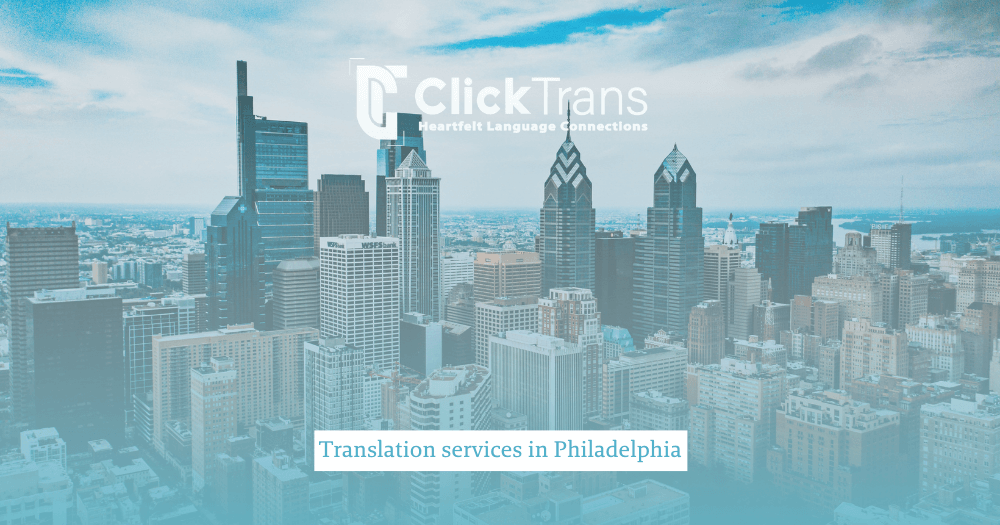Table of Contents
Did you know that in England and Wales, there are approximately 4.2 million people (8% of the population) who are non-English speakers? This caused the UK’s National Health Service (NHS) expenditure to rise to £65.96 million only for translation and interpreting services in the 2019/2020 fiscal year. Such figures vary in other countries and the necessity for patient translation services increases proportionately.
In our globalized planet, a study that studied health administrative data has proved that a significant number of patients with limited English proficiency (LEP) did not receive translation services while in hospital. So, what impact could that have?
What Are Patient Translation Services?
Patient translation services are all a patient needs whenever dealing with a foreign healthcare system. They encompass both interpreting and translating medical information between healthcare providers and patients to bridge language barriers, culture sensitivities, and even psychological barriers. Thus, patients understand their medical conditions, treatment options, and care instructions.
Such services are delivered through in-person or telephone interpretations, video conferences, and written translations. In many countries, healthcare providers are legally required to offer translation services to patients with limited proficiency in the prevalent language. This is done to ensure equitable access to healthcare and protect patients’ rights.
Why Do Patients Need Professional Translation Services?
Healthcare isn’t something to play around with or treat as a testing ground. Mistakes there can truly cost lives and lead to years of heartache for many. That’s exactly why LEP patients need reliable translation services and professionals that are greatly trustworthy.
Let’s dive a bit deeper. For example, professional translation services prevent miscommunication that can lead to misdiagnoses or inappropriate treatments! They also ensure informed consent on the patients’ side.
It is paramount that patients understand their medical options and make their own informed consent that entails risks and benefits of proposed treatments. This serves as a fundamental ethical and legal requirement in healthcare.
What’s greater is that effective communication has been linked to better adherence to treatment plans and improved health outcomes. This in turn reduces healthcare costs as errors are minimized and unnecessary repeat visits and hospital stays are avoided.
We do not even want to get started on the risks of misdiagnosis, medication errors, and complications, potentially leading to adverse health outcomes and how these impact patients’ safety.
These issues aren’t limited to what happens inside healthcare facilities. They begin even before a patient walks through the door and often persist long after they leave. Individuals with limited English proficiency face greater barriers to accessing primary care, and it doesn’t stop there.
The result is often poorer experiences and, ultimately, poorer health outcomes. The impact doesn’t end with health, either. It carries over into economic consequences. According to BMJ Open, communication-related errors in healthcare account for up to 15% of hospital spending on patient safety incidents.
How Do Translation Services Help Non-English-speaking Patients?
Patients on hospital doors are most vulnerable, especially if they cannot communicate! This could be due to many reasons. One of them is language barriers!
This is one of the situations where translation services step in and help non-English-speaking patients, offering smooth and clear communication and various language access services in healthcare.
However, translation services go beyond that and provide patients with limited English proficiency (LEP) far greater benefits including:
- Enhanced Understanding: enabling them to comprehend medical information, engage better with health providers, adhere stricter to treatment plans, and feel stronger while making informed decisions about their health.
- Reduced Anxiety: building trust between patients and healthcare providers as when they feel understood, they open about their history, symptoms and concerns.
- Equity In Healthcare Delivery: ensuring all patients receive the care they need, regardless of their language proficiency.
- Cultural Competence: helping healthcare providers understand and respect patients’ cultural backgrounds and health beliefs and enhance the quality of care and patient satisfaction.
- Enhanced Patient Safety: eliminating patient safety risks through accurate communication and minimizing potential errors.
- Increased Healthcare Utilization: encouraging them to seek medical care and improve their health outcomes proactively.
Who Provides the Best Patient Translation Services?
It is quite difficult to answer this question, however, logically speaking, the best to provide top patient translation services are those who are more practiced in it. Some of those are:
- Medical Interpreters: They are certified and trained professionals who convey verbal communication back and forth between patients and healthcare providers, ensuring accuracy, confidentiality, and cultural sensitivity.
- Medical Translators: They are certified and trained professionals who translate written medical documents, such as patients’ history, prescriptions, consent forms, etc. ensuring accuracy and adherence to medical terminology.
- Professional Translation Providers: They are expert companies with strong teams of translators who possess long and deep expertise and training in the healthcare field. Such companies ensure accurate understanding and adherence to medical texts.
- Community Health Workers (CHWs): Known as patient navigators or health advocates, they provide culturally appropriate support and language access services in healthcare. They help patients overcome unfamiliarity with the healthcare system, language barriers, and even financial challenges.
- Bilingual Healthcare Providers: They could be doctors, nurses, and other healthcare professionals with bilingual skills who assist in translation during patient-doctor interactions. However, they cannot ensure accuracy.
- Telehealth Interpreters: They specialize in remote healthcare communication platforms (telemedicine) to facilitate virtual consultations between patients and healthcare providers.
What Languages Does Clicktrans Support?
Our international team with numerous nationalities is fluent in hundreds of languages when combined. We are so proud to say that the services they offer cover all those following languages:
English – Arabic – Spanish – Mandarin – Urdu – Persian (Farsi, Dari, & Tajiki) – Vietnamese Telugu – Urdu – Korean.
This is not everything. We are always expanding to meet your needs. For the meanwhile, you can check all our languages here as well as all the solutions we provide!
What’s the Turnaround Time for Translations with Clicktrans?
According to the strenuous and most meticulous standards we made it a mission upon ourselves to abide by, we have set the rules when it comes to turnaround time, especially given the vast array of industries we serve.
Turnaround Timetable:
1- Documents up to 1,000 words are delivered within 24 hours
2- Documents up to 5,000 words are delivered in 1 to 3 working days
3- Larger or specialized documents are delivered based on a customized timeline tailored to your specific requirements.
That is not only the case, but we are also here when time is tight, too. We also offer rush services that are specifically designed for your urgent needs, and we make sure quality is in no way compromised. Our teams work together and with you to deliver your services even under the most difficult deadlines smoothly and reliably.
How Does Clicktrans Ensure the Quality of Its Translation Services?
At ClickTrans, we maintain high-quality translation services. Doing so, we run comprehensive quality checks to ensure each step of the service meets international standards and most importantly our clients’ expectations.
Therefore, we conduct both human and technology-assisted reviews, starting with precision and unification, cultural sensitivity, tailored project requirements, and the human expert final review.
We basically manage every project under a tailored approach, shaped around the clients’ goals and context. Therefore, we pay extra attention to cultural nuances and work closely with you to ensure each decision we make is accurate, thoughtful, and true to your purpose.
Conclusion
Patients’ translation services, as well as all the other medical translation needs, are very sensitive topics as they have many considerations. One would not implement such services, unless one has adequate lingual education, medical and legal backgrounds, expertise, understanding, and even empathy.
In our blogs, we have covered real-life medical disasters caused by wrong translations from around the globe. Look at them here!
It’s no mystery when lives of others literally lie in your words. That’s why, at ClickTrans, we understand the weight of every word in a medical setting and therefore bring together all those requirements in one place but numerous languages. So, you can rest assured and entrust all your needs in good hands.
Did you know you can book any of ClickTrans trusted solutions, including our full range of medical translation services, directly through our website?
Frequently Asked Questions
What’s the difference between medical interpreting and medical translation?
Medical interpreting is spoken communication (in person or remote). Medical translation involves written documents like consent forms, prescriptions, and discharge instructions.
Are patient translation services required by law?
Yes. In many countries, including the UK and the US, healthcare providers are legally obligated to offer translation services to patients with limited English proficiency (LEP).
Can friends or family members interpret for patients?
While they can help, using trained professionals is strongly recommended to avoid misunderstandings, preserve confidentiality, and ensure accuracy.
Why is cultural competence important in patient translation?
It helps ensure messages are not only linguistically correct but also culturally appropriate. This leads to better patient trust, safety, and health outcomes.








